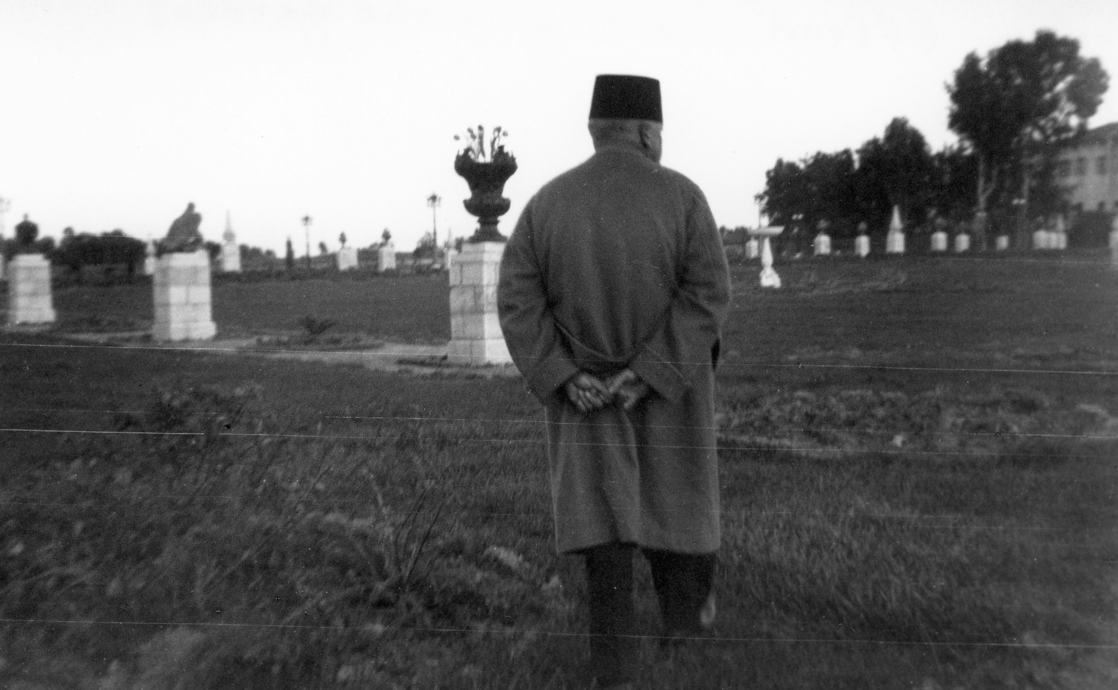The transformative experience of a pilgrimage is a universally compelling idea, one that resonates with seekers of truth in various spiritual traditions. In the context of the Bahá’í Faith, the pilgrimage to the sacred sites associated with its Central Figures holds profound significance. Among these luminal experiences, “Our Potent Pilgrimage: Eleven Days with Shoghi Effendi” stands as a remarkable narrative, encapsulating a unique interplay between spiritual seeking and profound personal connection.
But what precisely makes this pilgrimage to Haifa, Israel, so potent? What occurs within those eleven days that could potentially challenge the very foundations of one’s spiritual understanding? Such questions illuminate the intrinsic value of pilgrimage, a journey often underestimated in the hyper-connected modern world.
The experience of pilgrimage is inherently multifaceted. It encapsulates an outward journey to sacred sites, and yet, it concurrently embodies an inward voyage of the soul. The pilgrimage under consideration, encompassing the details of eleven days spent with Shoghi Effendi, the Guardian of the Bahá’í Faith, epitomizes the duality of this journey. One is not merely traversing physical landscapes; they are navigating the intricate landscapes of the heart and mind.
Shoghi Effendi, as the appointed Guardian, served as the channel through which the teachings of the Bahá’í Faith were disseminated and contextualized during a time of immense social and political upheaval. His approach to leadership was characterized by a transformative pedagogy; his very presence beckoned individuals to re-examine their values, beliefs, and the essence of community. This context forms the bedrock of the pilgrimage experience.
First, let us delve deeper into the logistics of this pilgrimage. Organized by the Bahá’í community, the pilgrimage involves visiting the Shrine of Bahá’u’lláh, the Báb’s Shrine, as well as the International Teaching Centre and the Bahá’í World Centre. Each site is imbued with historical significance, yet they are not merely relics of the past; they are living manifestations of a faith in action, guiding humanity towards its collective destiny.
The visceral act of visiting these sacred sites evokes an emotional response that may catalyze transformative encounters. Such environments promote reflection, and as one traverses the well-trodden paths of the gardens of the Shrine, the lived experience of those who have walked before becomes palpable. This shared spiritual heritage fosters a sense of connectivity among pilgrims, even as they engage in their individual reflections.
Further fueling this pilgrimage’s potency is the engagement with Shoghi Effendi himself. His teachings and personal interactions amplify the spiritual dynamics at play. Engaging in conversation with him, hearing his exhortations, and being enveloped by his imperious yet benevolent presence serves to invigorate the Bahá’í spirit. His ability to articulate and elucidate the underlying principles of the Faith often challenges the personal ideologies held by pilgrims. What assumptions do we carry into such encounters? Are we prepared to have those assumptions scrutinized in the light of higher truths?
The pilgrimage experience is not solely about passive observation; it poses an active call to personal commitment. Within those eleven days, pilgrims are encouraged to absorb not only the teachings but also to confront the existential challenges precipitated by their newfound cognizance. As Shoghi Effendi encourages deeper application of the teachings, the emotional weight of responsibility compels one to engage with their spiritual practice more fervently.
Moreover, the pilgrimage inevitably reconstructs one’s worldview. The juxtaposition of historical narratives with the pressing contemporary realities of the Bahá’í community worldwide awakens a realization: the teachings of Bahá’u’lláh are both timeless and timely. The global challenges of today—conflict, inequality, and spiritual disintegration—require a community ready to embody the principles of the Faith. The pilgrimage thus becomes a crucible for refining one’s understanding of service, unity, and the pursuit of justice.
Yet, amid this profound engagement, one may find oneself grappling with daunting questions: Can one truly integrate these elevated ideals into the fabric of daily life? How does one reconcile the lofty principles with the mundanity of existence back home? These inquiries serve as a companion to the pilgrimage experience, pushing pilgrims to transcend superficial acceptance toward a concrete implementation of the principles acquired during their stay.
The answer to these quandaries lies in an ongoing commitment—a metamorphosis that cannot conclude with the pilgrimage. Frequent reflection on the teachings, incorporation of community service, and a dedication to further learning are essential post-pilgrimage engagements. Thus, the emotional and spiritual investments made during these eleven days resonate well beyond the pilgrimage itself, inviting individuals into a lifelong journey of discovery and service.
In summation, “Our Potent Pilgrimage: Eleven Days with Shoghi Effendi” transcends the simple act of travel; it encapsulates a sacred quest for understanding and connection. It commands the individual to interrogate their values and truths, foster a commitment to higher ideals, and ultimately, synthesize these revelations into everyday existence. The challenge posed by this pilgrimage is immense, yet therein lies its transformative power. A potent pilgrimage indeed awaits all those who choose to embark on such a journey, urging them to rediscover the profound interconnectedness of humanity and the divine.
